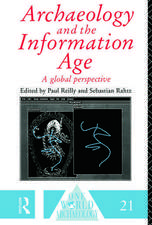Future Interaction Design II
Editat de Pertti Saariluoma, Hannakaisa Isomäkien Limba Engleză Paperback – 13 oct 2010
This second volume provides a wider perspective, from both a scientific and geographic outlook. New topics, such as psychological design processes, gerotechnology, modelling, e-learning and subconscious experiences are discussed from a team of international authors.
This book will be of considerable value to those seeking innovative perspectives upon designing and ensuring effective interaction between humans and technology.
| Toate formatele și edițiile | Preț | Express |
|---|---|---|
| Paperback (1) | 642.65 lei 6-8 săpt. | |
| SPRINGER LONDON – 13 oct 2010 | 642.65 lei 6-8 săpt. | |
| Hardback (1) | 647.61 lei 6-8 săpt. | |
| SPRINGER LONDON – 16 dec 2008 | 647.61 lei 6-8 săpt. |
Preț: 642.65 lei
Preț vechi: 803.31 lei
-20% Nou
Puncte Express: 964
Preț estimativ în valută:
122.98€ • 127.67$ • 102.55£
122.98€ • 127.67$ • 102.55£
Carte tipărită la comandă
Livrare economică 24 martie-07 aprilie
Preluare comenzi: 021 569.72.76
Specificații
ISBN-13: 9781849967754
ISBN-10: 184996775X
Pagini: 240
Ilustrații: XV, 221 p. 29 illus.
Dimensiuni: 155 x 235 x 13 mm
Greutate: 0.34 kg
Ediția:Softcover reprint of hardcover 1st ed. 2009
Editura: SPRINGER LONDON
Colecția Springer
Locul publicării:London, United Kingdom
ISBN-10: 184996775X
Pagini: 240
Ilustrații: XV, 221 p. 29 illus.
Dimensiuni: 155 x 235 x 13 mm
Greutate: 0.34 kg
Ediția:Softcover reprint of hardcover 1st ed. 2009
Editura: SPRINGER LONDON
Colecția Springer
Locul publicării:London, United Kingdom
Public țintă
ResearchCuprins
Gerontechnology.- Enhancing Mutual Awareness, Productivity, and Feeling: Cognitive Science Approach to Design of Groupware Systems.- The Future of Interaction Research: Interaction Is the Result of Top–Down and Bottom–Up Processes.- User Psychology in Interaction Design: The Role of Design Ontologies.- Field Experiments in HCI: Promises and Challenges.- Opportunities and Challenges of Designing the Service User eXperience (SUX) in Web 2.0.- Precedents for the Design of Locative Media.- Acceptance or Appropriation? A Design-Oriented Critique of Technology Acceptance Models.- The Polysemy of Human–Computer Interaction.- The Human Modes of Being in Investigating User Experience.
Recenzii
From the reviews:
"The book consists of an introduction and ten papers, plus a consolidated index of terms and authors. … the purpose of this book is to present new thinking in HCI, and in this, it succeeds. I would lend the book to graduate students interested in HCI, and I believe that research libraries should add a copy to their collections." (Richard Botting, ACM Computing Reviews, May, 2009)
"The book consists of an introduction and ten papers, plus a consolidated index of terms and authors. … the purpose of this book is to present new thinking in HCI, and in this, it succeeds. I would lend the book to graduate students interested in HCI, and I believe that research libraries should add a copy to their collections." (Richard Botting, ACM Computing Reviews, May, 2009)
Textul de pe ultima copertă
Everyday human-technology interaction is often problematic because the performance capacities that underlie the technologies change frequently, and new ones are introduced. Emerging technologies and services are compelling the interaction community to constantly develop new innovative approaches to solve interaction problems. As a result, interaction design is now in a crucial period in terms of capitalizing on new design possibilities to solve contemporary problems in an efficient manner.
This comprehensive volume follows the success of Future Interaction Design I and complements it by looking at emerging approaches which are likely to contribute to the discipline in the near future. The theme underpinning the book is that it is the human character rather than the technology that should determine the nature of interaction, and that the term ‘interaction design’ covers a range of issues relevant to enabling quality design. A team of international authors discuss a number of new topics, such as psychological design processes, gerotechnology, modeling, e-learning and subconscious experiences.
This novel and broad-ranging volume will be of considerable value to researchers and practitioners seeking innovative perspectives for designing and ensuring effective interaction between humans and technology.
This comprehensive volume follows the success of Future Interaction Design I and complements it by looking at emerging approaches which are likely to contribute to the discipline in the near future. The theme underpinning the book is that it is the human character rather than the technology that should determine the nature of interaction, and that the term ‘interaction design’ covers a range of issues relevant to enabling quality design. A team of international authors discuss a number of new topics, such as psychological design processes, gerotechnology, modeling, e-learning and subconscious experiences.
This novel and broad-ranging volume will be of considerable value to researchers and practitioners seeking innovative perspectives for designing and ensuring effective interaction between humans and technology.
Caracteristici
Provides, in continuum with the 1st volume, a forum for specialists to forecast their ideas about the developments in the field Delivers a futuristic perspective incorporating new fields and ideas to forecast the developments in the next 3 to 5 years Introduces new topics such as psychological design processes, gerotechnology, modelling, e-learning and subconscious experiences






























